Before I come to the actual topic of this post, the machine boneyard, allow me a short excursion.
During these Corona days, I have developed a ritual. As soon as the evening approaches, I am sitting in my armchair, looking out the window of my living room and watch the sun setting. Close to my house stands a fairly large administration building. On clear days, which we got lots of recently, the otherwise white facade explodes in an orange fire. Alpenglow right in my neighborhood. As the days go by, the hornbeams outside are showing some light green fluff. April has begun and, therewith, spring has arrived.
So, what has this to do with the images I want you to see? Well, while sitting in my chair, I had to think back to a trip I went on exactly one year ago. On a warm and sunny evening in early April 2019, I strolled around a machine boneyard for construction equipment. Decay, technical stuff and golden hour – a match made in heaven, at least for me. I already told you about this trip on an earlier post here on 35mmc and presented a few photographs. However, as I now remember this event with a tad of melancholy, I hope it makes a good story of its own.
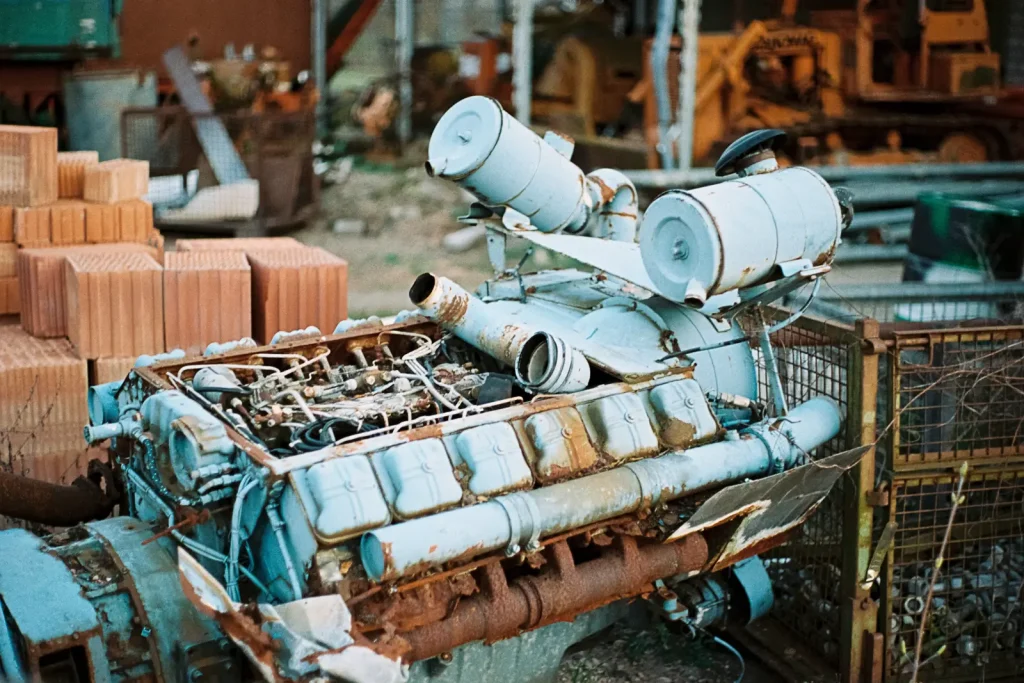
About my Trip to the Machine Boneyard
I had spotted the machine boneyard from the train, just on the day prior to my trip. (What does that tell you about my patience?) Rusty excavators and loaders stood there on a strip of wasteland, surrounded by trees and bushes. And not just two or three vehicles, a whole bunch of them. What a paradise! Although I had traveled this route many times before, I did not notice the rotten machines until then.
Sunset should occur at eight o’clock this evening. I planned to take my shots around the border between golden and blue hour. To end on the safe side, I arrived more than one hour too early at the site. An off-duty bus blocked the entrance, with the driver having a cigarette nearby. “Private property, better do not behave suspiciously”, I thought. “Let the cameras stay in the backpack – and you should back off in the meantime”, I gave myself instructions. To kill some time, I walked to the nearby village – only to feel like stranger, observed by countless pairs of eyes. One hour can turn into quite a stretch.
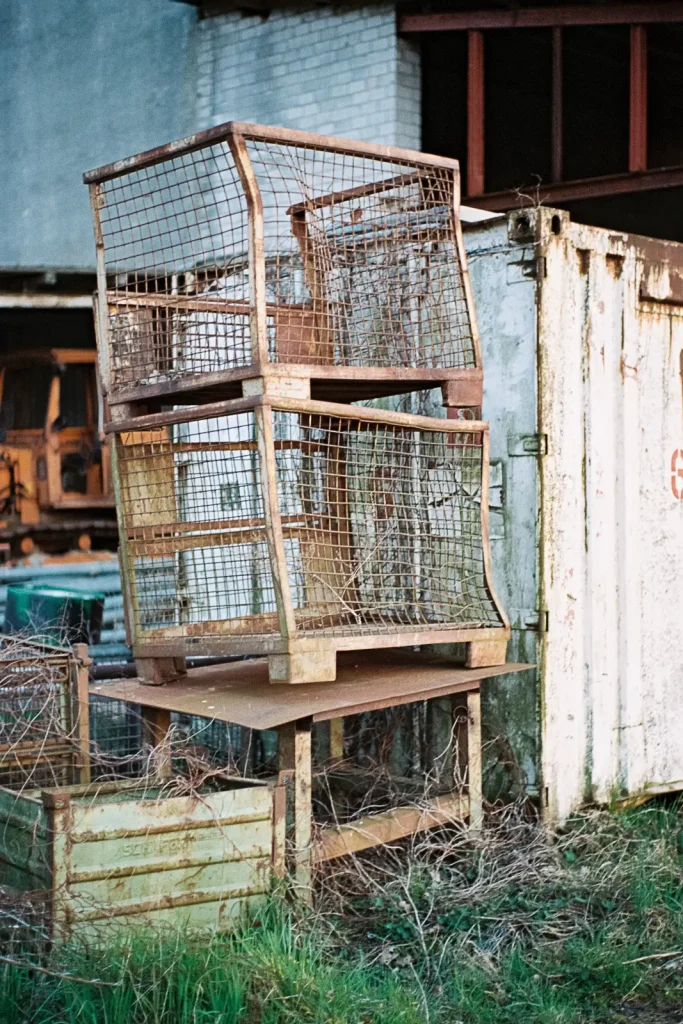
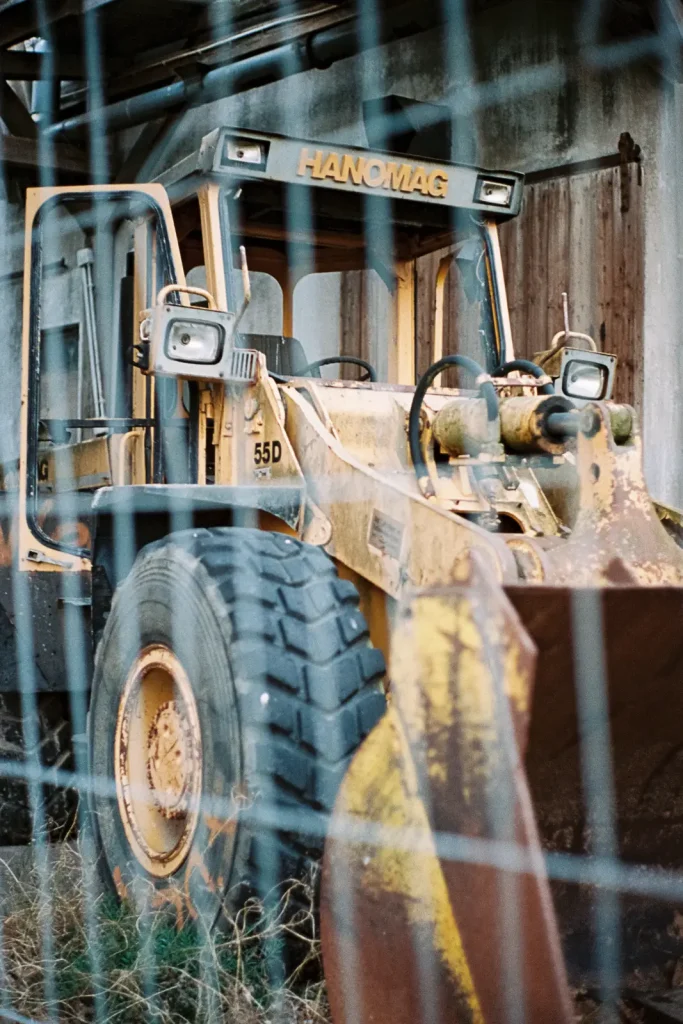
Ten minutes before sunset, the bus finally left. Gate open, let’s roll! As I wanted to act quickly and move freely if necessary (read: run away), I didn’t employ my tripod. The fading light as bottleneck. As most of the machines stood there crammed together, I focused mainly parts on and details. Debris lay around all over the floor, so I had to set my feet carefully. With two 35mm cameras, I ran through almost 40 frames in less than thirty minutes.
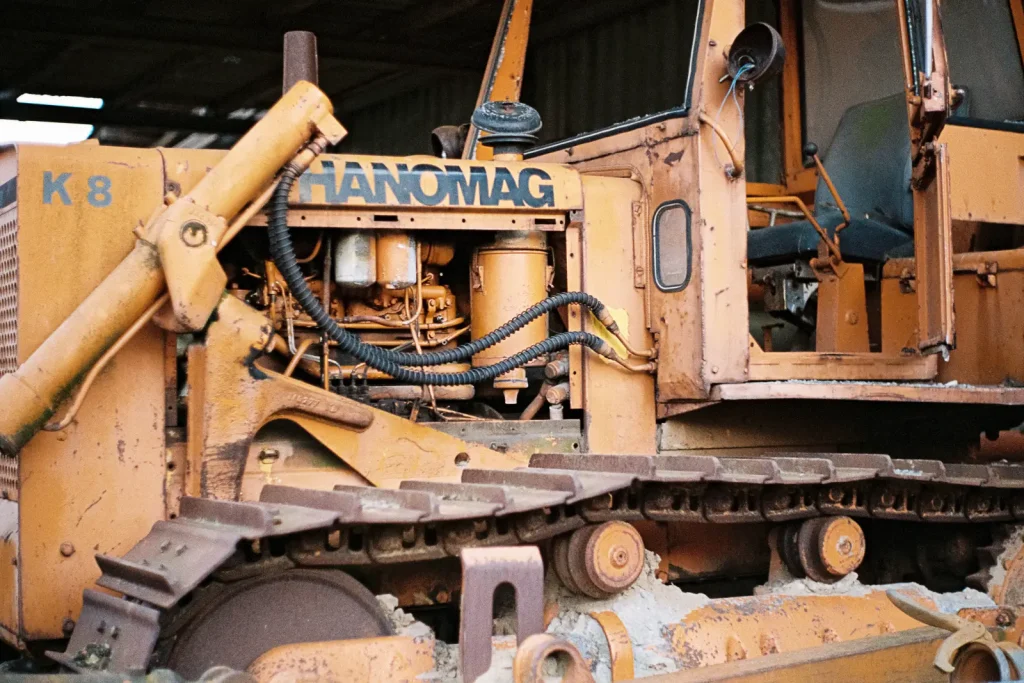
About my Fascination for Scrap and Abandoned Things
Decay evokes melancholy. It saddens me to see these old vehicles resting and rusting. Most of them exhibited a bad shape: the paintwork peeling off, parts removed, windows smashed. At the same time, the machine boneyard appeared calm and peaceful. No Diesel engine running, no rattling chains, and no grinding metal. Instead of exhaust fumes I smelled – nothing. As most of the machines were built in the 1970s and 1980s, it felt like I was returning to my childhood. As a kid I couldn’t imagine a thing more fascinating than an excavator at work. Although the same types of machinery exist today – loaders, bulldozers, grinders – I realized how much there shapes have changed over the years. Back then, the housings were designed way more edgy. And I discovered that many of the brand names have vanished meanwhile.
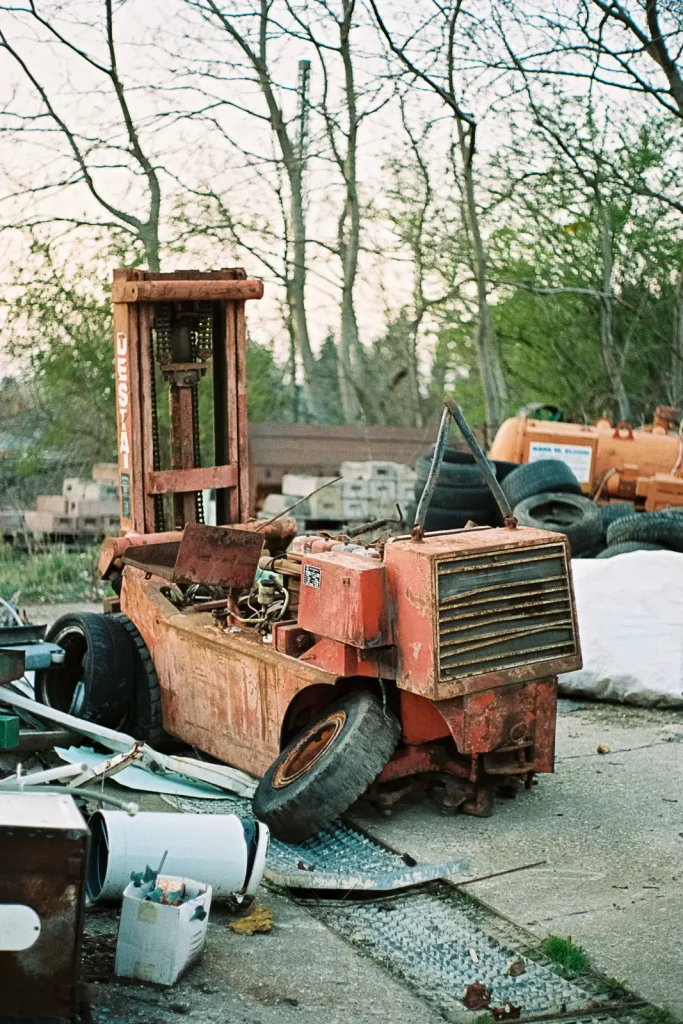
In contrast to vintage sport cars or elegant sedans, these were just functional machines. There is no real community that keeps those elderly workhorses alive. You won’t see a classic bulldozer cruising down the city’s boulevards. I think that made this discovery so valuable to me.
Among the most fascinating photographic imagery I have seen in this regard ranks the Shipbreaking series by Canadian photographer Edward Burtynsky. He presents an extremely dangerous and polluting scrapyard of a scale without comparison. Strangely shaped fragments standing on a vast, almost endless beach. I am tempted to see rather objects of modern art than hull sections of discarded oil tankers. Burtynsky covered these Indian and Bangladeshi places in the most aesthetic manner I can imagine.
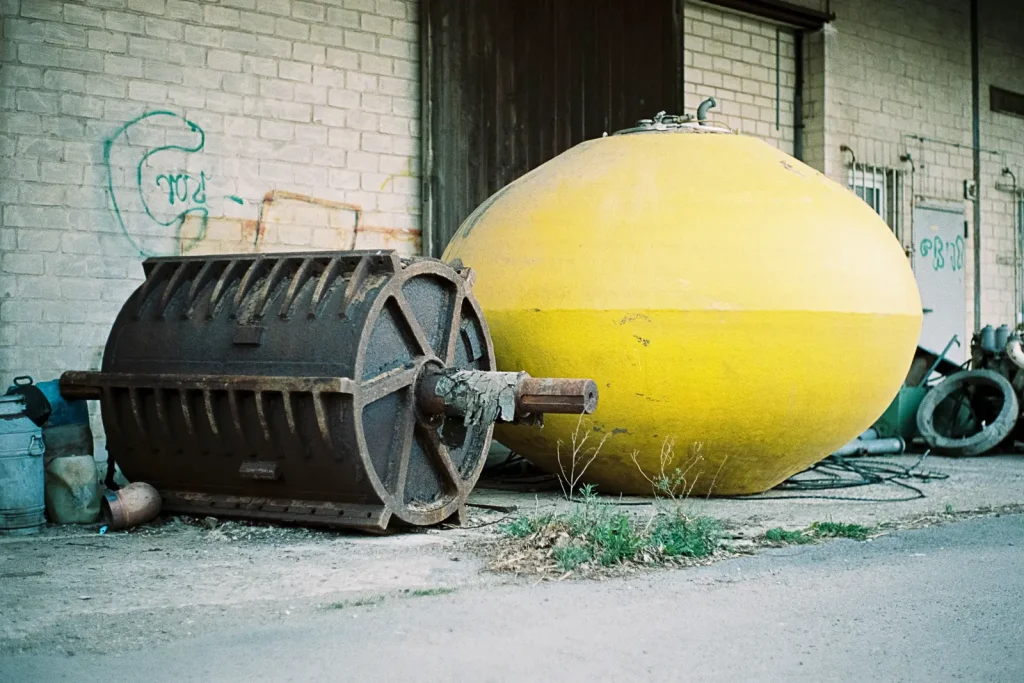
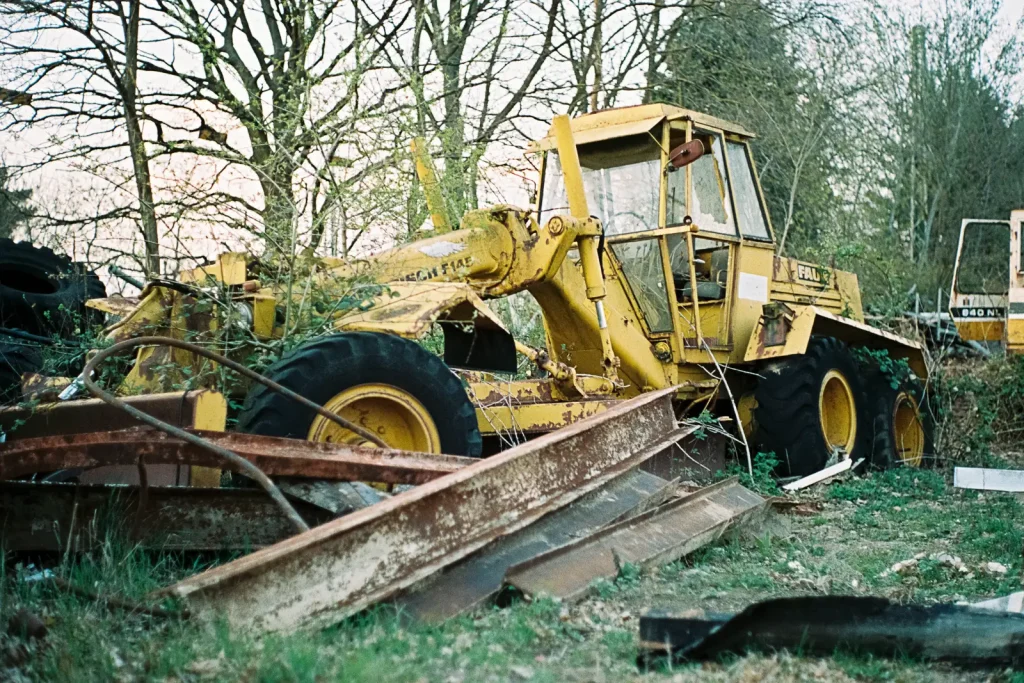
A few Words on the Camera …
As I mentioned earlier, I took two cameras with me to the machine boneyard: a Nikon L35 point-and-shoot as well as my Leica MP. Equipped with a fast 50mm f/1.4 lens, the Leica could handle the fading light situation much better than the Nikon. The former also allowed for a good background separation through the shallow depth of field: another plus. Nevertheless, I experimented with the Nikon’s built-in flash. Only to realize later that the harsh flash light had killed all the soft, pastel colors. That’s the reason why you won’t see any of the images taken with the point-and-shoot here.
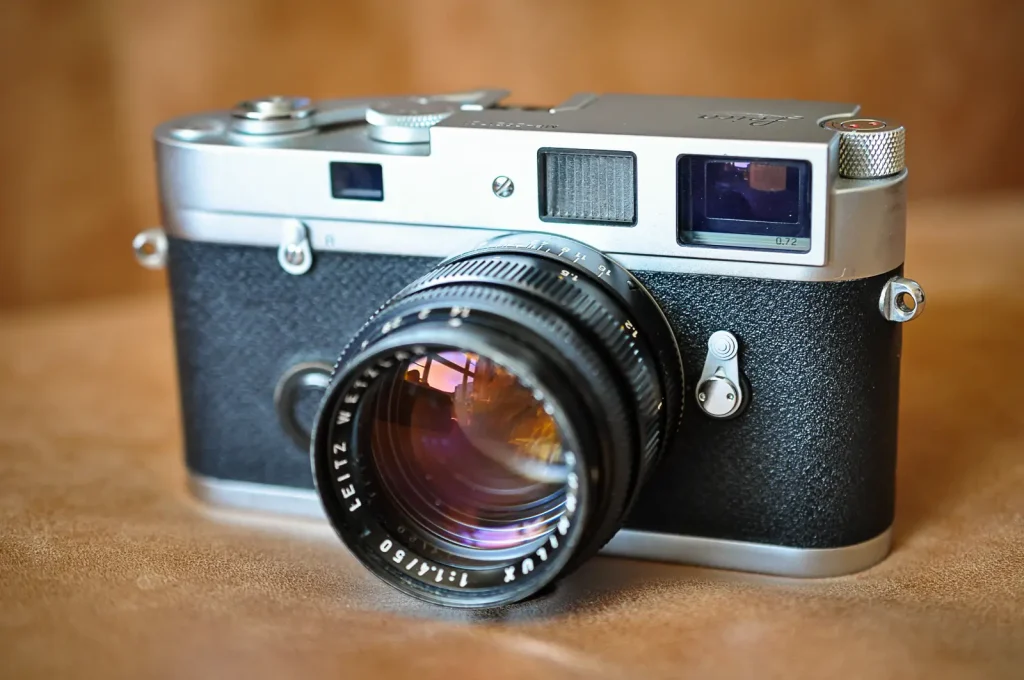
In probably most of the camera reviews dealing with Leica Ms you will read a line similar to this one: “an uncomplicated camera that doesn’t distract you from shooting”. These words exactly describe what I experienced with my MP. You might ask: “What is so difficult in taking photographs of lifeless objects?” I felt overwhelmed by the situation, there were so many things I wanted to capture. And yet I had to clean up the visual chaos first. Working under time pressure and the possibility of being thrown out at any moment. Although very basic, the MP’s integrated light meter helped a lot. No fiddling with an external meter as the light situation changed constantly.
If you are interested in more details on this camera, I gladly refer you to the reviews by Hamish and Adam.
… And on Colors
Why do we choose a color (negative) film over a black and white one? To draw a more realistic image of what we saw? To convey emotions associated with a particular color (set)? In my case, I find certain light conditions and the colors related to them just beautiful. So I think rather the latter reason applies. I really like how the film – Kodak Portra, of course… – renders the colors I encountered on the machine boneyard. Faded, pale tones of red, orange, yellow, and blue.
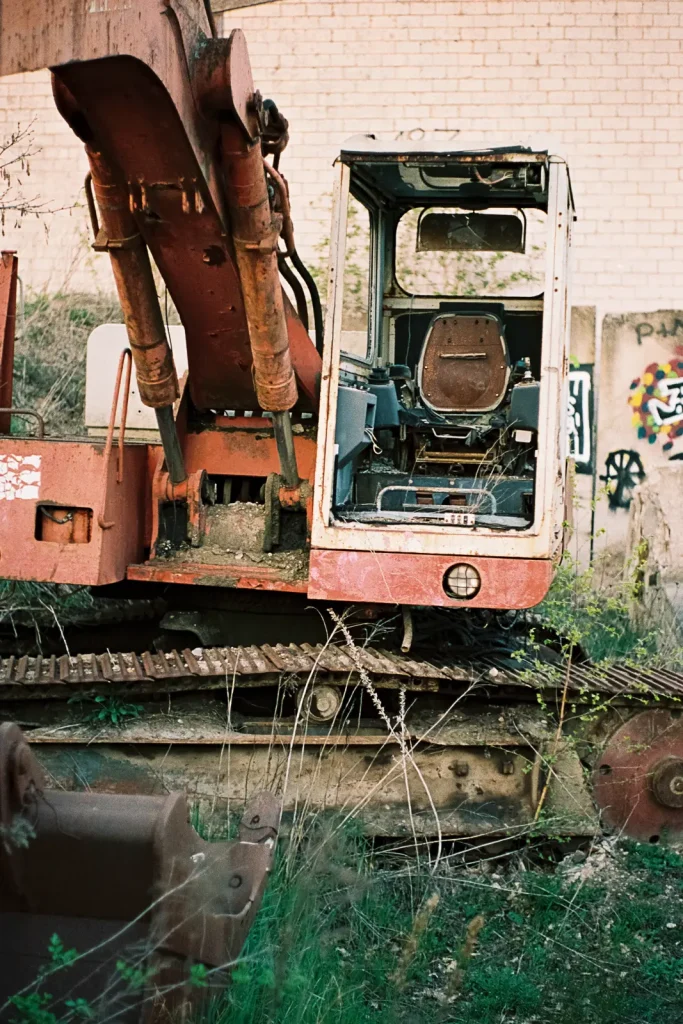
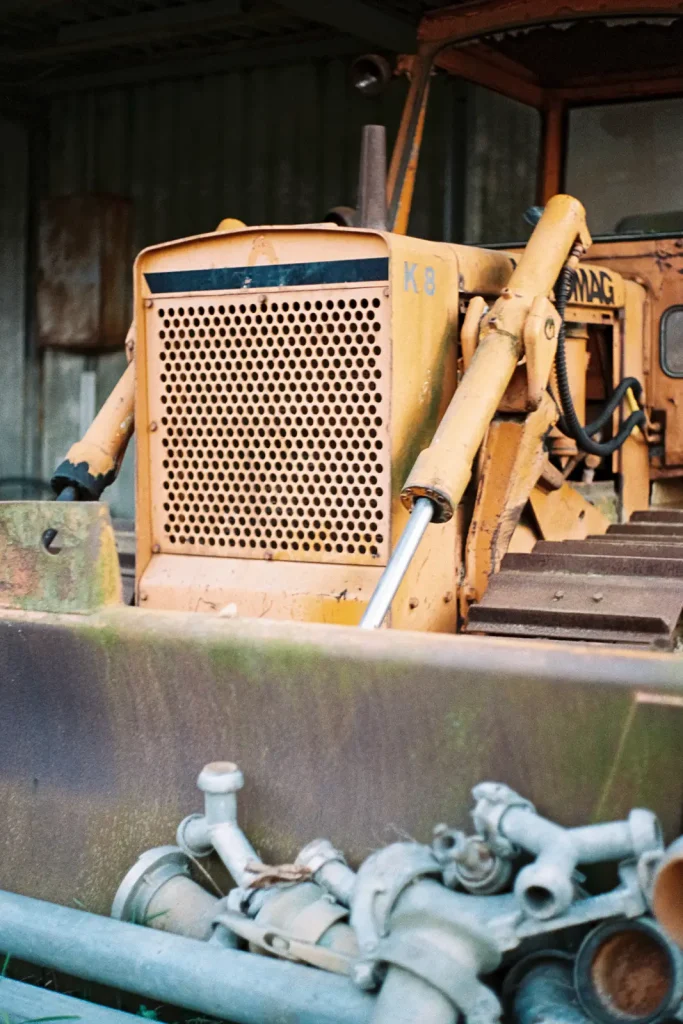
Final Words
Let’s look forward to the day we can go outside again and take shots of things we love. Until then, let’s develop new ideas, invent different approaches – and value our memories. Thank you for reading!
Share this post:
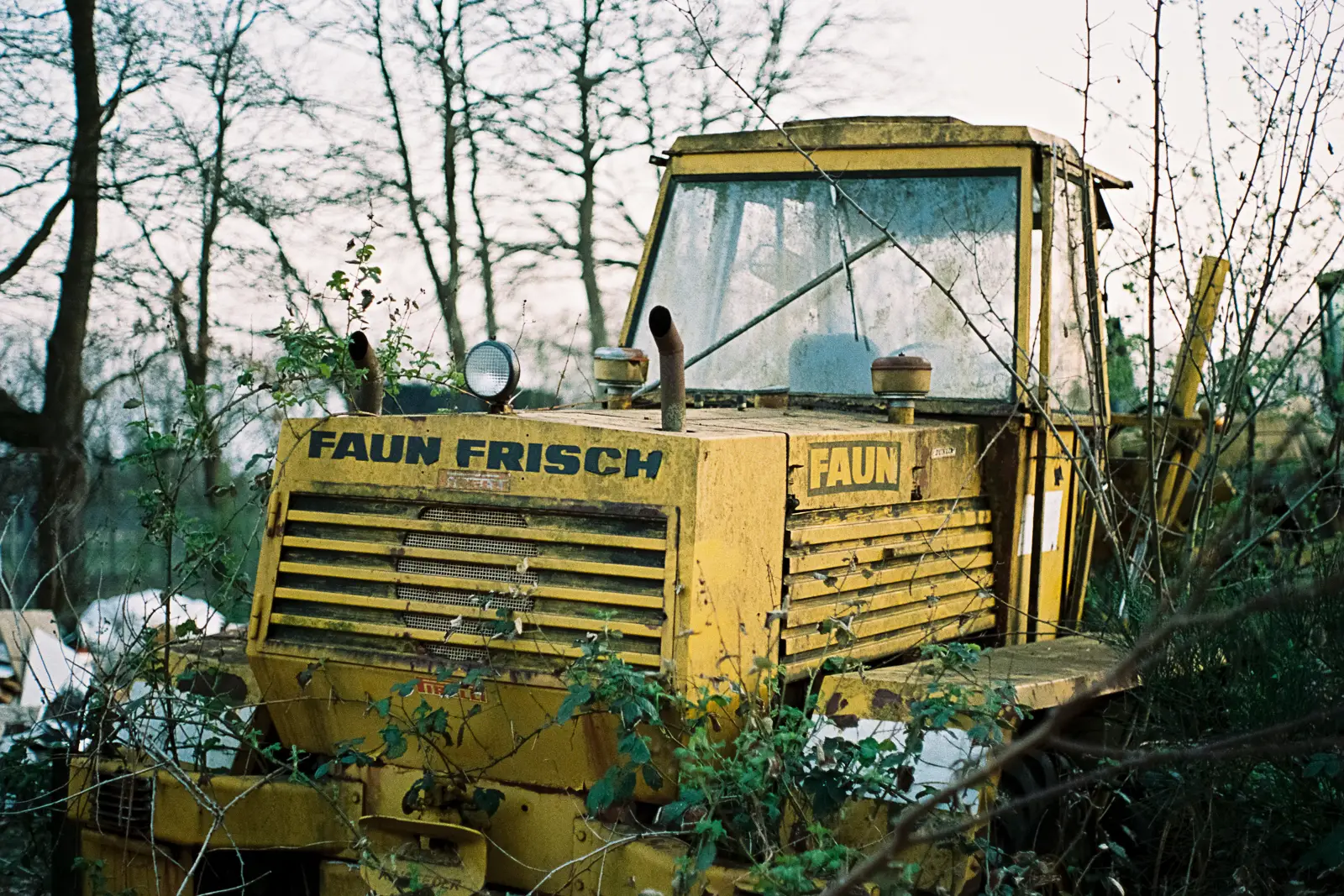








Comments
Bob Janes on At the Machine Boneyard: 10 Frames of Scrap Metal – by Christian Schroeder
Comment posted: 02/06/2020
Comment posted: 02/06/2020
Rock on At the Machine Boneyard: 10 Frames of Scrap Metal – by Christian Schroeder
Comment posted: 02/06/2020
Comment posted: 02/06/2020
Martin on At the Machine Boneyard: 10 Frames of Scrap Metal – by Christian Schroeder
Comment posted: 02/06/2020
I think the Austrian producer licensed them from Germany
https://www.schroeder-behaeltertechnik.de/index.php/erdtank
Stay healthy!
Comment posted: 02/06/2020
Ian R on At the Machine Boneyard: 10 Frames of Scrap Metal – by Christian Schroeder
Comment posted: 02/06/2020
Ian R
Merlin Marquardt on At the Machine Boneyard: 10 Frames of Scrap Metal – by Christian Schroeder
Comment posted: 02/06/2020
Khürt Louis Williams on At the Machine Boneyard: 10 Frames of Scrap Metal – by Christian Schroeder
Comment posted: 03/06/2020
Wise words. Although I've never shot Kodak Portra, I like the look of these images. I think I'll have to shoot a roll soon
Horace Porter on At the Machine Boneyard: 10 Frames of Scrap Metal – by Christian Schroeder
Comment posted: 15/06/2020
Daniel Castelli on At the Machine Boneyard: 10 Frames of Scrap Metal – by Christian Schroeder
Comment posted: 13/07/2020
you could spend hours crawling over this equipment with a macro lens. Think of the abstract shapes they would yield!
Another well done series of photos.
Comment posted: 13/07/2020